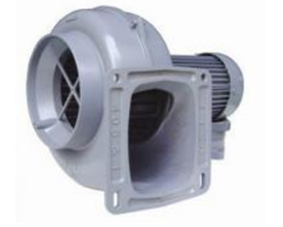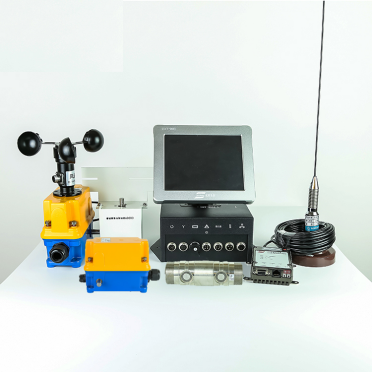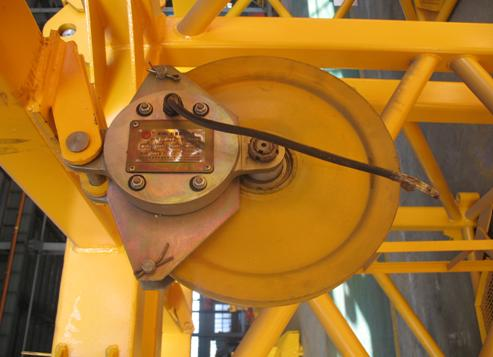Tower cranes are essential for modern construction, especially in high-rise and industrial projects, due to their ability to lift heavy loads. However, improper handling and overloading can lead to serious accidents. To prevent such risks, a Load Moment Limiter (LML)—also known as a crane load limiting device—ensures safe operation by keeping loads within safe limits. This article explores what an LML is, why it matters, and how it works.

What is a Load Moment Limiter (LML)?
A Load Moment Limiter for tower crane is a safety control system designed to monitor and limit the lifting capacity of the crane based on real-time calculations of load weight, boom angle, and radius. It ensures that the crane does not exceed its safe working load moment—the product of the lifted weight and the horizontal distance from the crane’s center of rotation.
Also known as an overload protection system or Safe Load Indicator (SLI), the LML helps operators prevent overloading and tipping incidents. It continuously measures the crane’s operational parameters and alerts the operator when a potential overload condition is detected.
Some advanced LML systems go a step further by locking certain crane operations (such as hoisting or slewing) when critical limits are approached or exceeded, providing both proactive monitoring and automatic intervention.
Why is Load Moment Limiter Important for Tower Cranes?
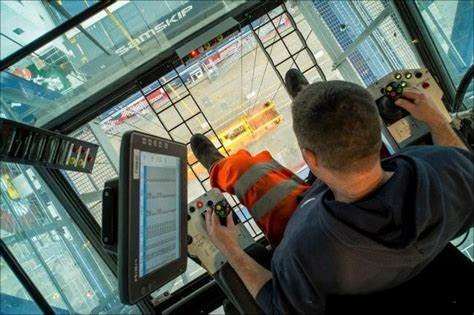
The significance of a crane load limiting device cannot be overstated. Here’s why the LML is a vital component in any tower crane setup:
Safety: The Non-Negotiable Priority
Lifting beyond a crane’s rated capacity can cause structural damage or complete collapse. An LML system acts as a real-time guardian, ensuring that the crane does not enter unsafe operating conditions.
Regulatory Compliance
Many countries and regions mandate the use of LMLs on tower cranes under construction safety laws and equipment standards. For example, in Europe, EN 13000 requires overload protection systems on mobile cranes, and similar regulations apply to tower cranes.
Protection of Equipment and Materials
Beyond safety, preventing overloading reduces wear and tear on the crane’s structure and mechanical components. It also protects costly construction materials and cargo from being damaged during improper lifting.
Economic Efficiency
- Avoiding Downtime: A single overload incident can halt work for days. In Australia, a crane’s 72-hour shutdown after an overload cost the project $120,000 in delays.
- Extending Equipment Life: Preventing overstress reduces wear on critical components like wire ropes and hydraulic systems.
Operator Support
Modern LMLs are equipped with digital displays and alarms that assist operators with visual and audible warnings. This empowers operators to make informed decisions without relying solely on experience or guesswork.
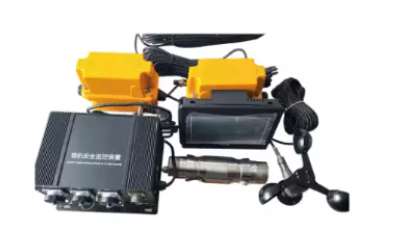
How Does a Load Moment Limiter Work?
A Load Moment Limiter uses a combination of sensors and a central processing unit to monitor the crane’s load moment in real time. The system then compares this value against the crane’s rated capacity and takes action if necessary.
Core Components
Let’s break down the essential components of a typical Load Moment Limiter system for tower cranes:
| Component | Function |
| Load Sensor | Measures hoist rope tension via strain gauges or hydraulic pressure transducers. |
| Angle Sensor | Tracks boom angle using potentiometers or inertial measurement units (IMUs). |
| Length Sensor | Monitors telescopic boom extension via rotary encoders or RFID tags. |
| Central Processor | Runs algorithms to calculate moment and compare against safety curves. |
| HMI (Human-Machine Interface) | Displays real-time data (e.g., “85% capacity”) and alerts. |
Workflow: How the System Operates Step by Step
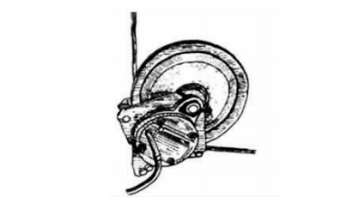
The LML system operates through a continuous cycle of measurement, calculation, comparison, and action:
- Real-time Measurement: The various sensors constantly gather data on the actual load weight, the lifting radius, and the boom angle (if applicable). This data is transmitted electronically to the control unit.
- Data Processing and Calculation: The control unit receives the raw data from the sensors and uses sophisticated algorithms and the crane’s pre-programmed load chart to calculate the actual load moment (weight x radius).
- Continuous Comparison: The calculated actual load moment is continuously compared against the crane’s rated load moment for the current configuration (based on the radius and boom angle). The control unit knows the safe lifting limits at every possible combination of these parameters.
- Warning and Alarm Signals: As the actual load moment approaches the rated load moment, the LML system initiates a series of escalating warnings. These typically include visual indicators on the display unit (e.g., color changes, bar graphs) and audible alarms. Different alarm levels might be triggered at 80%, 90%, or 95% of the rated capacity, alerting the operator to exercise caution.
- Automatic Safety Interventions: If the actual load moment reaches or exceeds the crane’s safe limit (typically around 100-110% of the rated capacity), the LML system automatically activates safety mechanisms to prevent further overloading. These interventions usually involve:
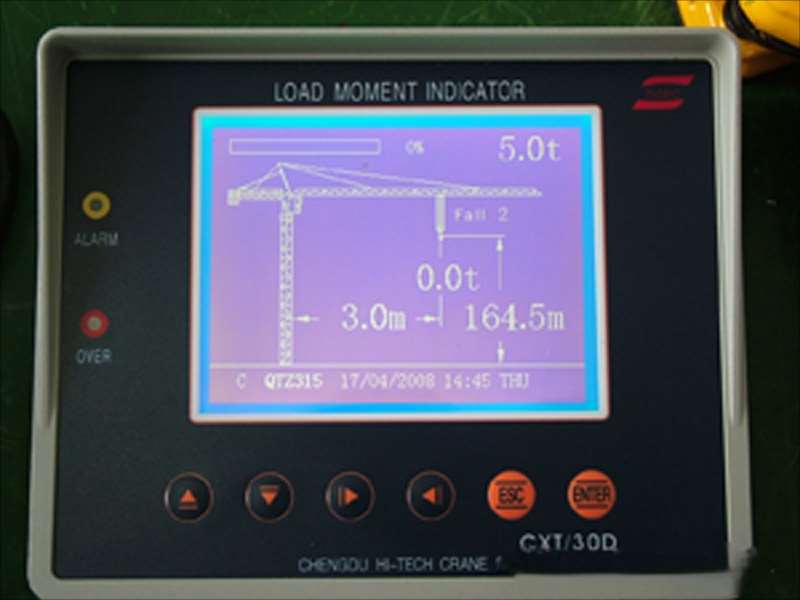
- Disabling Hoisting Up (Lift Up): Preventing the operator from lifting the load further.
- Disabling Outward Movement (Trolley Out/Luff Out): Preventing the operator from increasing the lifting radius, which would further increase the load moment
- Potentially Enabling Safe Movements: In some cases, the LML might still allow movements that would reduce the load moment, such as lowering the load or bringing the trolley/boom inwards.
6. Data Logging (Advanced Systems): Many modern LML systems record operational data, including instances of near-overload and overload events, along with the corresponding parameters (load, radius, time). This data can be valuable for post-operation analysis, maintenance, and safety audits.
Need a Load Moment Limiter for Your Tower Crane?
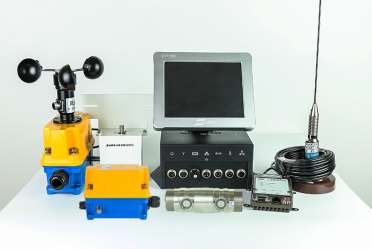
A Load Moment Limiter for tower crane is not just an optional add-on—it’s a critical safety device that directly protects lives, equipment, and investments on construction sites. Whether you’re an equipment operator, project manager, or safety officer, understanding how the LML works helps reinforce safe lifting practices and regulatory compliance.
With the growing complexity and height of construction projects, the role of load moment limiters will only become more essential. If you’re looking for a dependable crane load limiting device for your tower cranes, we offer a range of high-performance, standard-compliant LML systems suitable for different crane models. Contact us for technical specs, pricing, or a custom consultation.
Related Products
Tower Crane Trolley Device
Multiple functions
Intuitive operation
Trolleying Fan for Tower Crane
Tower Crane Load Moment and Anti-collision
Visualized Monitoring
Improved Construction Efficiency
Tower Crane Load Limit
Safe and Reliable
Simple Operation
High Precision


